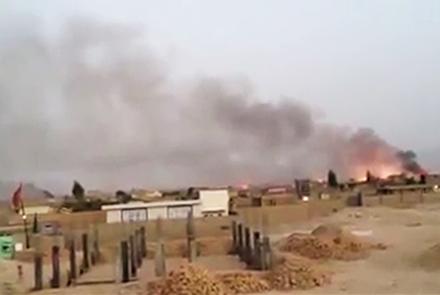The United Nations Office for the Coordination of Humanitarian Affairs Afghanistan said on Monday they had received reports of a number of civilian casualties in the ongoing battle in Ghazni city.
However, they did not give any indication as to how many residents have been killed or wounded.
According to the statement: “Residents of Ghazni City have seen their city turn into a battlefield since Friday morning, with fighting and clashes reportedly still ongoing.
“We have received initial reports of a number of civilian casualties and of people trying to reach safe areas outside of the city,” said Rik Peeperkorn, acting Humanitarian Coordinator for Afghanistan.
He also said: “Medication at the main hospital is reportedly becoming scarce and people are unable to safely bring casualties for treatment. Main access roads both north and south of the city to larger cities where medical facilities are available are contested and unsafe for people to travel.”
“According to sporadic reports from within the city, many families have reportedly taken shelter in their houses and are unable to leave their homes. Vital telecommunications net-works and the electricity supply are down in the city of 270,000 people which has impacted on the water supply, and food is also reportedly running low.”
“We call on all parties to the conflict to respect their obligations under international humanitarian law to protect the lives and rights of civilians and to protect civilian infrastructure. Notably, parties to the conflict need to ensure that access to medical services is not denied and respect for medical facilities and staff is upheld.”
This comes as details on the exact situation in Ghazni are scarce as cellphone lines in the city are down.
On Monday morning, President Ashraf Ghani said however that he held an emergency meeting on Sunday night where it was decided to send in reinforcement troops as a matter of urgency.
Without much contact with officials and residents in Ghazni, reports did start trickling in on Monday from residents – many of whom had fled the city. They said there is still a heavy presence of Taliban in some areas of the city and that clashes are ongoing.
Residents said that government forces have taken back control of the Bala Hisar area in the city and that the “Taliban retreated from Moy-e-Mubarak area.”
Residents also said that PD5 in the city had fallen to the Taliban and that there is a heavy Taliban presence in Bakawol, Qala-e-Shahada and Naw Abad areas.
They also confirmed the Taliban had set fire to the IEC’s offices and said a government fuel station in the city was also torched by the insurgents.
According to them, Afghan National Army Commandos and Special Forces have been placed in Qala-e-Amir Mohammad Khan and Sark-e-Omomi area in the city.
However, there has been no official confirmation on these reports.


